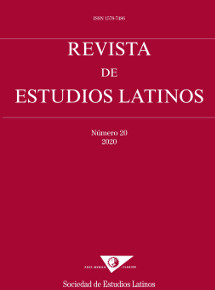De uillatico et pastorali dicendum est. On the watchdog in Roman agronomy
DOI:
https://doi.org/10.23808/rel.v20i0.87197Keywords:
Roman Agronomy; Columella; Varro; Watchdog in History.Abstract
This contribution gathers and ponders –with Columella’s text as the main thread– references to the watchdog in Latin agronomists. We use the last edition of the Res rustica, translating it and trying to clear up difficult points. Our goal has been to establish the Columella’s method and sources (his own experience, oral tradition, Greek and Roman authors). Thus we point out his veiled criticism of Varro and we notice different levels of self-demand in writing his treatise. We include a brief review of the latest publications related to the subject, which shows very various perspectives and is framed in the valuation of animals from Antiquity to the present day.
Downloads
Downloads
Published
How to Cite
Issue
Section
License
Copyright (c) 2021 Revista de Estudios Latinos

This work is licensed under a Creative Commons Attribution-NonCommercial-NoDerivatives 4.0 International License.
The originals published in the printed and electronic editions of this journal are the property of the Revista de Estudios Latinos and can be circulated as long as the original source and authorship is made clear in any reproduction, full or partial, of the same, and as long as this is not done for commercial purposes.






